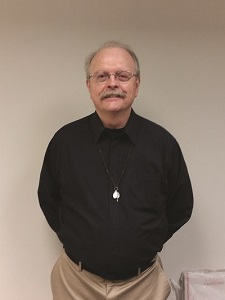
When praying the Nicene Creed at mass we speak that we believe that God created all things “visible and invisible”. Much of the thinking of today discounts the idea of the invisible.
A nineteenth century philosopher, Aguste Compte, promoted the idea of positivism. Positivism is the idea that if something cannot be verified by observation through the senses, or derived through logic than it is not worth our attention. Positivism rejects the notion of God, spiritual beings, and theology since they cannot be scientifically observed and quantified. Since I cannot see God, then he doesn’t exist and is not worth my time and effort. Thus, atheism. Only that which is “visible” ought to be the focus of our attention.
Thus, many of us reject the notion of true love between married couples, and they want to say something to the effect that the expression of love through sex, is only due to the need to propagate the species. Is love real or not? You can’t see it or observe it by the senses. It just doesn’t make sense from a materialistic view. From a positivistic view, love is just a means of protecting and passing on our genetics to the next generation. Positivism reduces everything to a materialist viewpoint. Therefore, even the soul does not exist. Neither do heaven, hell, and spirit. For the positivist, the after life is purely a human projection to ease our fear of death.
Would any of us deny that love exist? Would any of us deny emotions. I deal with them everyday and so do you. Yet they are invisible. No one has ever seen courage, sadness, joy, or even pain for that matter. Yet we know that they exist.
We live in a world of signs and symbols, which point to a deeper unseen reality. We as human beings and children of God use signs and symbols to describe things that are invisible. For example, the love in marriage is expressed by the sharing of vows and rings, and expressed in making love, going to work, sacrificing for the family, keeping the family home, educating children etc. In our definition of a sacrament, we say that a sacrament is an “outward sign, instituted by Christ, to give grace.” They are expressions of unseen realities.
It is natural for us to then want to know the unseen reality that the sign is pointing to. In Baptism the water, light candle, signing with the cross, point to an unseen reality of the Holy Spirit, cleansing and acceptance into the Church. The words, signs, and actions of the sacrament of marriage, reveal the presence of human love that points to the love of Christ and his spouse, the Church. In Holy Orders the newly ordained receive the Holy Spirit, empowering them to act in the person of Jesus. In the Eucharist we do not see the Body, Blood, Soul, and Divinity of Christ. Yet this consecrated bread and wine are just that. They are. This unseen reality does not depend on what I believe or think. It does not depend on the worthiness of the priest. The consecrated bread and wine are not merely symbolic. They are Jesus, unseen. Can I prove it? No, not anymore than one can prove love, courage, sacrifice, joy, or gravity. We just know it. We are surrounded by unseen realities, the “invisible”.
“May the Lord bless and keep you. May he let his face shine upon you, be gracious to you and give you his peace.”
